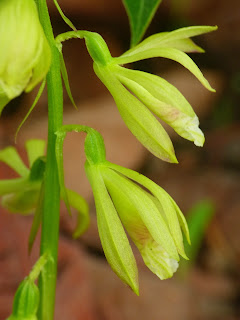Damselflies are less famous than their relatives, the dragonflies. They are far more delicate in appearance, much smaller, and mostly fold their wings when resting making it more difficult to spot them.
Like dragonflies, the damselflies are mostly found near water (rivers, ponds, lakes), but some species are also found readily in gardens - especially gardens that have unkempt lawns with abundant grass.
Swati and I kept such an unkempt garden in our Udaipur home and were often visited by the Three-striped Blue Dart, Pseudagrion decorum, damselfly. One of these individuals carried a load on its side!
On the side of the thorax was a dark clump - a group of water mites. When viewed from above, it became obvious that this particular damselfly was a mite-favourite. There were quite a few mites on both sies of the thorax.
The additional load did not appear to impact the damselfly in any obvious way. It flitted about catching mosquitoes and other small insects. A week later, a damselfly in the garden (the same one as before?) also had water mites, but only a couple of them. The mites had apparently jumped off and may have used the damselfly to disperse. This method of dispersal where one species uses another is termed "phoresy". Fewer mites or not, the damselfly was busy chomping all the mosquitoes it could catch!
Between 2017 and 2023, we saw only three damselflies in our garden with mites, out of several dozen observations of damselflies. The third damselfly was also seen within a week of the other two - all in October 2022. The rains had been unusually worse for a month that is normally a post-monsoon month with very little rain. Were the mites a consequence of increased rains?
Like with most wildlife species, there is little ecological work conducted on damselflies in India. However, there is considerable work conducted elsewhere on water mites and damselflies, and these provide some interesting findings.
- Mark Forbes and Robert Baker found that smaller and lighter damselflies carried many more mites. It may be that weaker individuals were more susceptible.
- Leung and others found that mites latched on to damselflies closer to emergence - they were clearly watching and waiting!
- Andres and Cordero's cool study found that while mites did not affect damselfly survival, heavily-parasitized male damselflies mated much less than damselflies with fewer mites.
- Nagei and others noticed that the water mites were sort of good at escaping when their damselfly hosts were being eaten by dragonflies. Semi-engorged mites were all eaten up - clearly too busy feeding themselves. However, half of the fully engorged mites managed to drop off in time to escape being eaten. The little chaps were clearly great at survival, but only after they had had their fill!
It was fairly yucky to view the parasitic mites close up. But the research work being done on them showed the mite-damselfly interactions to be rather cool. Now we are wondering how many damselfly species in India carry water mites, and why 2022 was such a good year for the mites in Udaipur.






















